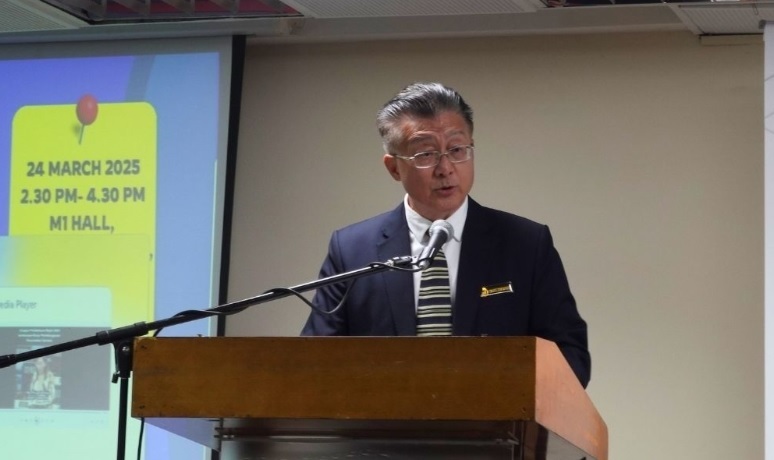
- Datuk Chang Kim Loong: "For the average Malaysian, we have repeatedly said, owning a home is not just a dream but the largest financial commitment of a lifetime. It is precisely because of this financial and emotional significance that the protection of homebuyers must be at the heart of any housing policy reform."
In a recent report, Abandoned housing: Rehda Institute advocates tiered developer licensing, the Real Estate and Housing Developers’ Association (Rehda) Institute has proposed a few solutions to addressing the distressing issue of abandoned housing projects.
In our opinion, Rehda Institute is missing the forest for the trees. It's like being so close to a painting that you only see individual brush strokes instead of the complete artwork.
While the Institute outlines several reasons for such failures and offers ideas to prevent or revive them, the proposals largely ignore the most critical issue—the urgent need to honestly protect homebuyers from being the ultimate victims of these failures.
Food, clothing, and shelter are basic human needs. For the average Malaysian, we have repeatedly said, owning a home is not just a dream but the largest financial commitment of a lifetime. It is precisely because of this financial and emotional significance that the protection of homebuyers must be at the heart of any housing policy reform.
There are two ways to purchase residential property in Malaysia:
1. Buying completed properties from existing homeowners (commonly known as the “secondary market”). This includes completed but unsold units still held by developers, which, for the purposes of this article, are also considered part of the secondary market.
2. Buying under-construction or yet-to-be-built properties directly from developers (known as the “primary market”), through the sell-then-build (STB) model. Under STB, the developer is allowed to sell the property to the buyer without having to complete the property or even having to actually commence construction of the said property, which represents a potential risk. It’s also commonly known as the “buying a pie in the sky” model.
After the buyer signs the sale and purchase agreement (SPA) with the developer, the developer then issues progressive billings based on the stages of construction of the said property, which are paid by the homebuyer’s bank (end-financing bank). The buyer begins servicing a loan for a property that does not yet exist, which represents another potential risk.
While most primary market purchases are eventually completed, many are, unfortunately, not. When a housing project remains uncompleted 24 months (for landed property) or 36 months (for stratified property) after the scheduled SPA delivery date, it falls under either of these three categories: “late”, “sick” or “abandoned”.
For any housing project to be classified as an abandoned project, it must be “certified by the Minister that the licensed housing developer has abandoned the housing development” under Section 11(1) (ca) of the current Housing Development (Control & Licensing) Act (HDA), 1966. This amendment to HDA was made vide Act A1142 on Dec 1, 2002. Our guess is that the reclassification had something to do with the Housing and Local Government Ministry (KPKT)’s KPI (key performance indicators), whereby it will tweak the statistics to show that abandoned projects are much lower than those in the category of “sick” projects.
For affected and aggrieved buyers, whether of sick or abandoned projects, this is not just a delay but a financial and emotional catastrophe that can impact entire families and future generations.
The National House Buyers Association (HBA) has been assisting buyers in such situations for decades, which includes projects that have been abandoned for more than 20 years, often mentioned by KPKT as “legacy cases”. These cases offer undeniable proof that the persistent STB system has failed to protect homebuyers when errant developers fall short.
HBA’s response to Rehda’s proposals
Rehda Institute has proposed several measures to prevent or recover abandoned projects, including:
1. A tiered developer classification system—ranking developers by financial strength and track record.
However, even top-tier developers often use subsidiaries, or special-purpose entities or vehicles (SPVs) to launch new projects. These SPVs are financially insulated from the parent company. If the SPV fails, the buyer bears the loss, not the developer’s parent group. They are separate legal entities in law.
So, those problematic developers will set up separate companies to undertake other developments to circumvent the “blacklisting”. What is stopping these individuals from forming other companies using proxies? They will not use the same board of directors, whose names are blacklisted in KPKT’s record. They will proceed with using their grandmothers’, in-laws’ or “out-laws”’ names. You think the ministry has got a record of their family trees to link them to the blacklisted companies and their board of directors?
HBA also wishes to emphasise that abandoned housing projects can affect both small and large property developers, and it would be misleading to imply that larger property developers are immune to abandonment. Some of the larger abandoned housing projects in the late 1990s involved what was then considered to be tier-1 property developers in Malaysia. We are sure Rehda Institute is aware of such listed companies that have gone defunct.
This structure renders Rehda’s classification system less effective in real-world scenarios.
2. A government-led Housing Completion Guarantee System (HCGS) to protect the homebuyers from financial losses and ensure the projects are completed even in cases of developer insolvency.
The idea of a HCGS may sound good in theory, but in fact, it is a perfect example of “profit privatised, losses nationalised”. What it actually means is that profits from the property projects belong to the respective developer companies, while losses from the projects are borne by taxpayers.

It is HBA’s belief that, in effect, the implementation of HCGS will encourage property developers to be more reckless and undertake more high-risk and potentially unviable property development projects on the notion that if such projects encounter financial difficulty, the government, through the HCGS, which will step in to mop up the mess left behind.
This topic of HCGS will be elaborated in another article.
3. The idea that homebuyers should conduct due diligence, as recommended by Rehda Institute, before making a purchase, including checking developer backgrounds through KPKT’s “blacklisted developers” list is not something new.
Read also
Blacklisting not a cure for late, sick and abandoned housing projects
The real problem: flaws in the STB model
At the core of the issue is the STB model, which is fundamentally flawed because it exposes buyers to maximum risk while offering minimal protection:
* Developers can bill homebuyers for work-in-progress—for example, RM60,000 when a RM300,000 property reaches 20% completion.
* The buyer’s bank disburses the payment, and the buyer is now indebted—even though the property may not yet be liveable.
* If the project is later abandoned, say at 50% completion, the buyer must continue repaying a RM150,000 loan, even as they may still be paying for either the rent or instalment of their current home.
* The buyer is now locked out of taking another housing loan, potentially for years, until the outstanding loan of RM150,000 above is cleared.
This vicious cycle leads to deep financial strain and emotional distress and it affects not just the house buyer, but entire families and potentially their future generations, and inhibits their ability to move forward in life.
The solution: build-then-sell (BTS) or BTS 10:90
The only way to effectively protect homebuyers is to reverse the risk exposure and this can only be achieved through the BTS approach. Under BTS, developers must fully complete the property before being allowed to sell them.
Rehda, however, has long opposed the BTS, claiming it would lead to a total collapse of the property industry in Malaysia. HBA disagrees with this scare tactic. HBA believes that the property industry will adapt to BTS as the ultimate intention is to protect the interests of house buyers for a healthy and sustainable property development industry in Malaysia.
As a middle ground, HBA has proposed the BTS 10:90 model, which offers a balanced approach:
* Developers are still allowed to sell the property without having to complete the construction of the said property.
* Buyers pay only a 10% down payment and sign the SPA upfront.
* The remaining 90% is only payable upon completion with all the ownership papers and vacant possession.
* Developers fund construction using their own capital or corporate loans via project financing.
* If the project is abandoned, the buyer’s maximum loss is limited to the 10% down payment.
* Reviving such projects becomes easier, as buyer banks are not involved—only the developer’s financiers.
BTS 10:90 concept was intended to replace STB as early as 2019, which eventually would migrate to absolute BTS 0:100 by the year 2023. These were stated officially in our nation’s Dasar Perumahan Negara (National Housing Policy) (2018–2025).
Read also
National Housing Policy—a great blueprint awaiting implementation
Alas, BTS 10:90 concept remains optional due to lack of political will and the strong lobbying power of the rich and powerful property developers, and hence, STB continues to dominate. As long as STB persists, homebuyers will remain exposed to devastating risks. There is no solution to housing project abandonment; you just have to change the concept to BTS or the hybrid BTS 10:90.
Read also
Property Chat: BTS 10:90 is not BTS
Conclusion: Time for systemic change
While Rehda focuses on identifying causes and designing recovery mechanisms, it misses the most important truth: the existing system fails because it does not protect house buyers from failure of the developer to complete the project.
No amount of developer classification or government guarantees can substitute for a structural shift in how properties are sold. We must stop normalising a model where the buyer bears the developer’s business risk and/or failure to complete the project for whatever reason.
Malaysia must adopt BTS 10:90 as the default, mandatory system and not an option. The government must lead this change in the interest of long-term consumer protection and industry sustainability. Until that happens, “late”, “sick” and abandoned housing projects will continue to plague the housing arena and leave behind not just concrete skeletons but shattered dreams and long-term financial and emotional distress to house buyers and their future generations.
This article is written by Datuk Chang Kim Loong, honorary secretary-general of the National House Buyers Association (HBA).
HBA is a voluntary non-government and not-for-profit organisation manned wholly by volunteers.
HBA can be contacted at:
Email: [email protected]
Website: www.hba.org.my
Tel: +6012 334 5676
The views expressed are the writers’ and do not necessarily reflect EdgeProp’s.
Does Malaysia have what it takes to become a Blue Zone, marked by health and longevity? Download a copy of EdgeProp’s Blueprint for Wellness to check out townships that are paving the path towards that.





